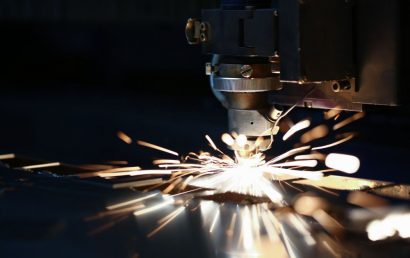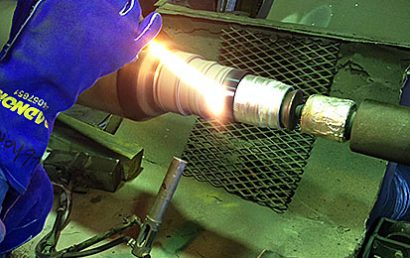OSHA And The Thermal Spray Experience
Anyone who has worked in an even marginally industrial setting knows all too well who OSHA is. They make and enforce the rules and regulations – and they don’t play. If a plant has too many incidents or accidents, for example, it is highly likely they will receive a no-nonsense visit from OSHA.
The letters O-S-H-A stand for Occupational Safety And Health Administration. And they take that name very seriously. What is OSHA’s role when it comes to the thermal spray experience?
OSHA and Thermal Spray
The main role of the Occupational Safety And Health Administration, when it comes to the world of thermal spray, is to protect operators from gases, compressed air, dust, fumes, and ultraviolet light. All facets of the thermal spray environment are regulated by OSHA. So that shops can more readily comply with the rules and regulations set forth and enforced by OSHA, the following practical safety tips are offered.
Gases
Numerous industrial gases are used in the thermal spray process. These can include the following: oxygen, kerosene, hydrogen, helium, propylene, argon, and acetylene. When not in use, fuel gas and oxygen supplies must be isolated. Gas leakage most constantly be prevented. Never, under any circumstances, should a pressurized system ever be worked on by an operator. (Industrial gases are commonly under pressure.)
Compressed Air
High air pressure is generally used during the operation of thermal spray equipment. Operators should follow these commonsense safety practices:
- For cleaning purposes, compressed air should be reduced to 30 psi (pounds per square inch) or less. Personal protective equipment and chip guarding should always be used.
- No breathing apparatus should be supplied by plant compressed air.
- Clothing should not be cleaned by the use of compressed air.
- Compressed air should not be used to clean spray cubicles or to clean powder off of equipment.
- All compressed air hoses should be rated for high pressure.
Dust And Fumes
Many sprayed materials are extremely hazardous. Because of the fumes and dust created by atomized molten metals during the thermal spray process, operators can be placed in danger. To protect the operator’s safety and health, yet still provide adequate spray coatings, engineering controls like air makeup units, ventilation, and dust collectors are necessary.
Ultraviolet Light
Nonionizing radiation, or UV light, is produced during the thermal spray process. Various processes used in thermal spray produce specific levels of nonionizing radiation, high temperatures, massive arc intensity, and more. Proper protection must be given to exposed skin, eyes, and other parts of the body, depending on the process.
Truth be told, it is no less and no more dangerous to operate thermal spray equipment than it is any other equipment in an industrial setting. Checklists and operating procedures should always be established, learned, and practiced. Safety issues must be thoroughly researched in order for the enhancement of safe operation. First and foremost, it is advisable that all employees be 100% familiar with MSDSs before beginning work in any industrial situation.
At A&A Coatings, we run a tight ship. Our technicians, applicators, operators, and other thermal spray employees are never exposed to unnecessarily adverse conditions. We adhere to the rules and regulations set forth by OSHA and see to it that all of our employees operate under the safest conditions possible. If you would like to find out what thermal spray coatings can do for you, your industry, or your company, contact us today.



